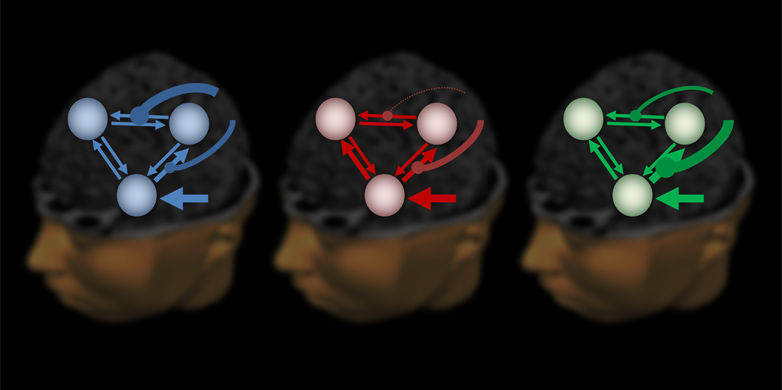Using mathematical models to diagnose schizophrenia
Researchers at ETH Zurich and the University of Zurich have succeeded in identifying various subtypes of schizophrenia using mathematical models. This paves the way for more accurate diagnosis and more targeted treatment.
“Today, patients with psychiatric disorders are more or less treated according to the “trial and error” principle”, says Klaas Enno Stephan, Professor at the Institute of Biomedical Engineering. The reason: at the present time, in most cases standardised questionnaires are the only tool available to identify and diagnose psychiatric diseases. However, they do not suffice to determine, for example, the various subtypes of a disease. Unlike physiological disorders where blood tests can help to gain an understanding of the causes, it is not normally possible to correctly diagnose psychiatric disorders straightaway and then treat the patient in a targeted manner. Often, it takes several months to find an effective treatment to which patients respond. Researchers from Stephan’s group, led by Kay Brodersen and in cooperation with the Berlin Charité Hospital, now present an approach which could prove useful here and contribute to psychiatric disorders being diagnosed more accurately in future. In concrete terms, the scientists demonstrate that it is possible, with the help of a mathematical model, to differentiate the brain activity of test persons with and without schizophrenia, and to divide schizophrenia patients into subgroups.
The “simple mathematical model”, according to Stephan, which enables this differentiation, analyses images of brain activity obtained by functional magnetic resonance imaging (fMRI). It then calculates the strength of coupling among three selected brain regions. These estimates, which reflect the intensity of communication between these regions, were hypothesized to provide insight into the type and severity of the disease of the schizophrenia patients.
Working memory as the indicator
To test their model the scientists asked 41 patients with schizophrenia and a control group with 42 healthy test persons to look at and remember images. During this working-memory task, the researchers recorded the subjects’ brain activity. This is because “Working memory is a simple measure of cognitive performance, and it is often considerably impaired in schizophrenia patients”, explains Stephan.
It was demonstrated that the coupling strengths among the three brain regions examined differ considerably when healthy controls and patients were compared. Using the researchers’ model the schizophrenia patients themselves could be divided into three groups with different brain activity patterns. The surprise: when comparing this with the patients’ clinical symptoms (which had not been included in the analysis up to this point), it emerged that the three identified groups did indeed represent various degrees of severity of schizophrenia.
New paths for psychiatry
Stephan’s team could thus demonstrate that the model works in practice and that mathematical models could be a suitable test method for more accurate diagnoses of psychiatric disorders. “Working memory has also proven to be a relevant parameter and a potentially suitable indicator for subgroups of schizophrenia”, observes Stephan.
However, the current model is just a first step in this direction. It is still a long way from being ready for routine use in clinical practice. For that further studies will be required. “What are missing in particular are tests with patients who at the time of the study have not yet taken any medication and in whom the researchers can observe over time how the disease develops, which medicines help and whether the model’s predictions concerning the disease trajectory actually prove to be true”, explains Stephan. “Our group’s mission is to construct and test models of this kind. Many of these models will fail but a few will work and we hope that this will enable psychiatry to embark on new paths”, says Stephan.
Reference
Brodersen KH, Deserno L, Schlagenhauf F, Lin Z, Penny WD, Buhmann JM, Stephan KE: Dissecting psychiatric spectrum disorders by generative embedding. NeuroImage: Clinical 4 (2014) 98–111, doi:external page10.1016/j.nicl.2013.11.002call_made

